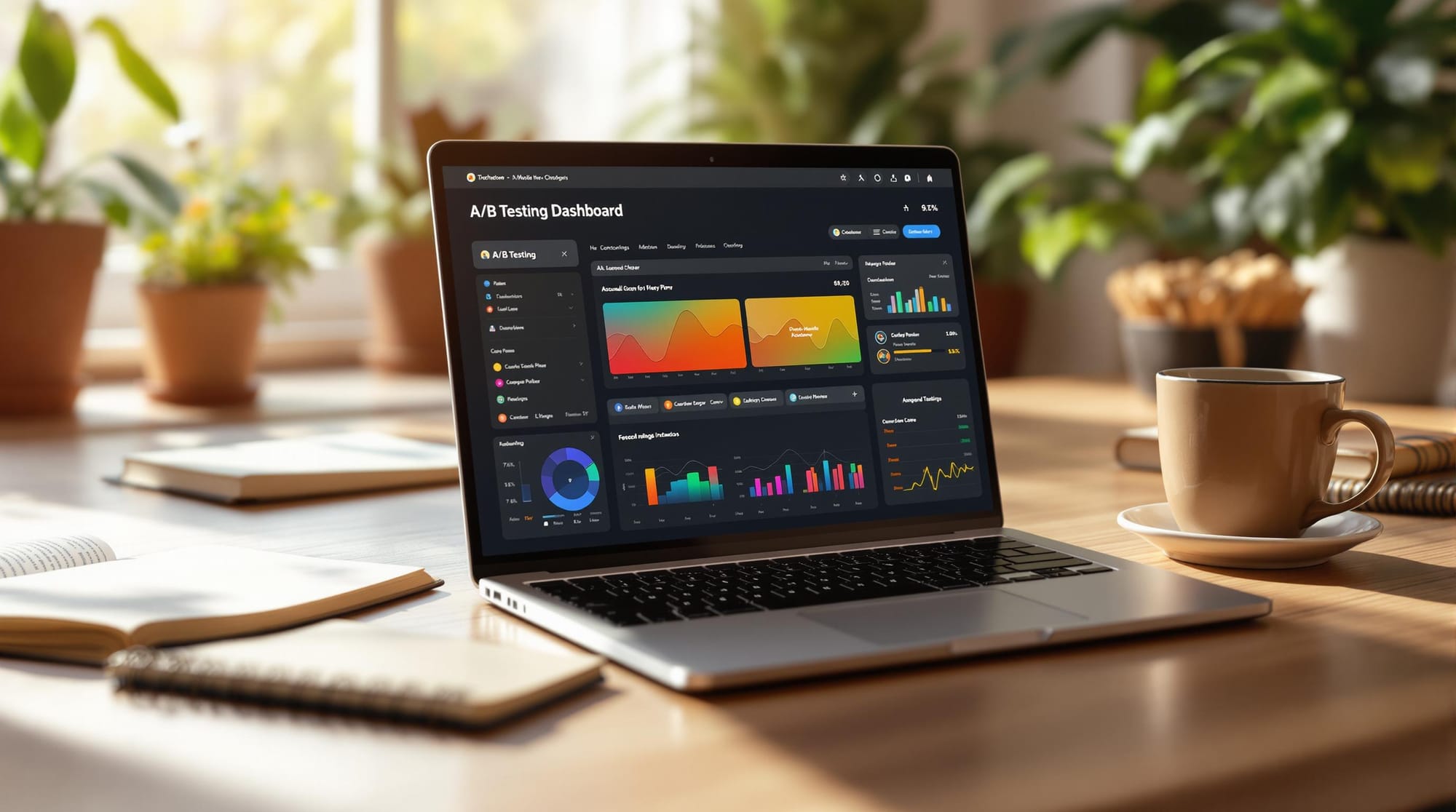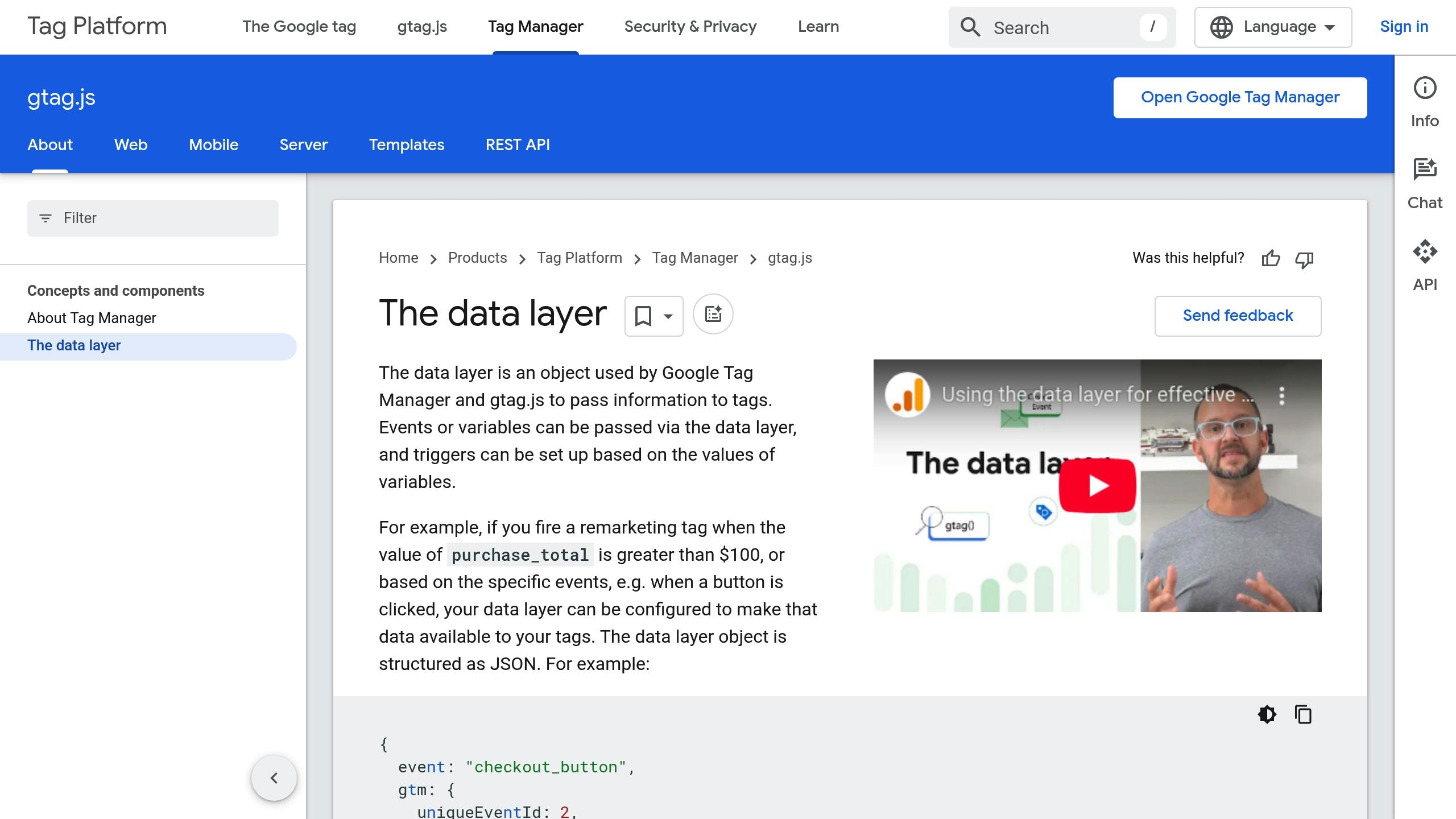How to A/B Test Personalized Cart Offers
Learn how to effectively A/B test personalized cart offers to boost conversions, reduce abandonment, and enhance customer experiences.

Here’s what you need to know:
- Personalized Offers Work: Tailor promotions like free shipping bars, AI product recommendations, and tiered discounts to increase conversions and average order value (AOV).
- What to Test: Experiment with offer timing (e.g., exit-intent triggers), presentation (e.g., mobile-friendly designs), and structure (e.g., dynamic shipping thresholds).
- Core Metrics: Focus on conversion rates, AOV, and cart abandonment rates to measure success.
- Tools to Use: Shopify-compatible tools like Cart Drawer & Cart Upsells offer built-in A/B testing features and analytics.
- Key Steps:
- Set clear goals (e.g., reduce cart abandonment).
- Create variations (test one variable at a time).
- Use control groups and run tests for at least 2 weeks.
- Analyze results for statistical significance.
By testing personalized offers methodically, you can increase sales, reduce cart abandonment, and create better shopping experiences for your customers.
| Test Type | Primary Metric | Secondary Metrics | Priority |
|---|---|---|---|
| Shipping Bar | AOV | Cart completion rate, Time to buy | High |
| Mobile Design | Mobile conversion rate | Abandonment rate, User engagement | High |
| AI Recommendations | Click-through rate | AOV, Cross-sell success | Medium |
Start small, learn from your results, and scale up to optimize your cart experience!
How to Use GTM DataLayer to A/B Test Shopping Cart on ...

What Are Personalized Cart Offers?
Personalized cart offers are promotions tailored to individual customer behavior. They aim to lower cart abandonment rates and boost sales by responding to specific actions, purchase history, or browsing habits. Unlike generic promotions, these offers are designed to feel more relevant to each shopper.
Common Offer Types
The most effective personalized cart offers combine different strategies to create a more engaging shopping experience:
- Dynamic Free Shipping Bars: Real-time updates show customers how much more they need to spend to earn free shipping, encouraging additional purchases.
- AI-Powered Product Suggestions: Recommendations based on cart contents and browsing history, helping customers discover complementary items.
- Tiered Discount Structure: Discounts that grow as the cart value increases, motivating larger purchases.
- Personalized Gift Offers: Free items tailored to customer segments or past purchases, adding a touch of exclusivity.
| Offer Type | Best Used For | Impact on Sales |
|---|---|---|
| Free Shipping Threshold | Increasing cart value | Encourages extra purchases to meet the threshold |
| AI Product Suggestions | Cross-selling opportunities | Boosts cart value with relevant recommendations |
| Tiered Discounts | Driving higher order value | Incentivizes larger purchases with better savings |
| Gift Offers | Improving conversions | Converts hesitant shoppers with appealing incentives |
These offers are designed to influence buying decisions and improve sales outcomes.
Impact on Sales
Personalized cart offers are powerful tools for shaping customer behavior. They:
- Improve conversion rates by addressing specific customer concerns.
- Reduce cart abandonment through well-timed, relevant incentives.
- Increase average order value by encouraging upselling and bundling.
- Build customer loyalty with thoughtful, personalized promotions.
This approach is especially effective in mobile commerce, where responsive, user-friendly cart designs have shown to significantly enhance conversion rates.
Testing Basics
Before running A/B tests on personalized offers, keep these key principles in mind:
- Segmentation: Group customers by behavior, preferences, or demographics for more precise targeting.
- Control Groups: Use a control group to measure the effectiveness of your offers against a baseline.
- Variables: Test one element at a time, such as offer type or timing, to isolate its impact.
- Duration: Allow enough time to collect meaningful data and ensure results are statistically valid.
How to Plan Your A/B Test
Planning an A/B test for personalized cart offers involves setting clear goals, identifying key elements to test, and choosing the right tools. Here's how to create an effective plan.
Setting Test Goals
Start by defining specific, measurable goals. Are you aiming to reduce cart abandonment, increase average order value (AOV), or improve conversion rates? Focus on one main metric, but track secondary ones too. Make sure to document your current performance so you can measure any changes accurately. These goals will guide your testing of factors like timing, design, and structure.
Once your objectives are set, identify the elements that can directly influence these outcomes.
What to Test
Focus on testing elements that align with your objectives. Here are some ideas:
-
Offer Timing
Test how timing affects outcomes:- Immediate vs. delayed offer triggers
- Exit-intent triggers
- Cart value thresholds
-
Offer Presentation
Experiment with how offers are displayed:- Mobile-friendly designs
- Visibility of progress indicators
- Placement within the cart interface
-
Offer Structure
Try different offer setups:- Dynamic shipping thresholds
- Tiered discount levels
- AI-driven personalized promotions
Selecting Test Tools
Once you've decided what to test, use tools that integrate seamlessly with Shopify and offer strong analytics capabilities. Look for features like:
-
Analytics Integration
- Real-time tracking
- Segment-specific reports
- Mobile performance insights
-
User Experience Features
- Visual editors for offers
- Mobile responsiveness testing
- Easy control over A/B test variations
-
Technical Requirements
- No page redirects
- Fast loading speeds
- Compatibility across devices
For Shopify users, Cart Drawer & Cart Upsells is a great option. It includes built-in A/B testing features tailored to optimize cart offers and track their impact on your key metrics.
Running Your Test
Effectively implement your personalized cart offer experiments by following these steps.
Creating Test Versions
Start by defining a control group that uses your current cart setup as the baseline. When creating test versions, focus on changing one variable at a time to keep your results accurate.
Here are a couple of ideas to try:
-
Dynamic Shipping Bars
- Control: Standard free shipping threshold
- Variation: A progress bar showing how close the customer is to earning free shipping
- Metrics to watch: Average order value and cart completion rates
-
Mobile-First Design
- Control: A layout designed for desktop users
- Variation: A mobile-friendly interface with larger, thumb-friendly buttons
- Metrics to watch: Mobile conversion rates and cart abandonment
Once your variations are live, keep an eye on them to catch and resolve any issues quickly.
Test Management
During the experiment, monitor traffic distribution, technical performance, and any changes you make. Tools like Cart Drawer & Cart Upsells offer built-in tracking features, making it easier to keep tabs on real-time metrics and resolve problems as they arise.
User Experience Guidelines
To make sure your test results reflect the true performance of your offers, follow these key guidelines:
-
Keep the Design Consistent
Stick to your brand's look and feel across all test versions. -
Ensure Fast Loading Times
Slow pages can lead to higher abandonment rates, skewing your results. -
Optimize for Mobile
Test each variation on different devices and screen sizes to ensure usability everywhere.
As with any personalized offer, focus on clarity and speed. Use AI-powered segmentation to tailor suggestions based on customer behavior. Keep progress indicators and calls-to-action (CTAs) clear and visible, but avoid overwhelming the user interface.
Measuring Results
Performance Metrics
When assessing your personalized cart offer tests, focus on these key metrics to track progress and success:
Core Metrics:
- Conversion rate: Monitor the percentage of users completing their purchases.
- Average Order Value (AOV): Keep an eye on the average value of orders.
- Cart abandonment rate: Measure any decrease in customers leaving items unpurchased.
- Time to purchase: Track how quickly users complete their checkout process.
Engagement Metrics:
- Click-through rates for offers.
- Time spent viewing offers.
- Interaction rates with shipping threshold bars.
- Performance differences between mobile and desktop users.
Understanding Test Data
To ensure your test results are accurate and actionable, follow these key steps:
Statistical Significance: Your test must gather enough data to provide valid insights. Pay attention to:
- Adequate sample size.
- Test duration (run for at least 2 weeks).
- Balanced traffic distribution.
- Confidence level (aim for 95% or above).
When analyzing results, be mindful of external factors that could affect your data, such as:
- Seasonal trends or holidays.
- Active marketing campaigns.
- Changes made to your website.
- Any technical glitches.
Once your data is verified, you can focus on applying the insights effectively.
Next Steps
After identifying successful variations, roll them out thoughtfully:
1. Document Key Features
Record the personalization elements that delivered the best results. Understanding what worked will help guide future strategies.
2. Expand Success
Apply these winning strategies across your store. For example:
- Broaden personalized offers to reach more customer groups.
- Introduce AI-driven product recommendations.
- Enhance mobile designs that performed well during testing.
3. Plan for Continuous Testing
Develop a testing schedule that focuses on:
- Different audience segments.
- Seasonal promotions tailored to specific times of the year.
- Experimenting with new types of offers.
- Further optimizing mobile functionality.
Optimization is an ongoing effort. Use AI segmentation tools to refine your approach and improve customer satisfaction with targeted recommendations.
| Test Type | Primary Metric | Secondary Metrics | Priority |
|---|---|---|---|
| Shipping Bar | AOV | Cart completion rate, Time to purchase | High |
| Mobile Design | Mobile conversion rate | Abandonment rate, User engagement | High |
| AI Recommendations | Click-through rate | AOV, Cross-sell success | Medium |
Conclusion
Testing personalized cart offers through A/B testing is a smart way to improve your Shopify store's performance. By experimenting methodically, you can cut down on cart abandonment, increase average order value (AOV), and keep customers coming back.
Here are some strategies to consider as you refine your approach:
- Dynamic Personalization: Leverage AI tools to create tailored offers that resonate with your audience.
- Mobile Optimization: Make sure your cart is mobile-friendly and include offers specifically designed for mobile users.
- Strategic Testing: Track key metrics, ensure your tests are statistically sound, and keep testing regularly.
Focus on dynamic features like free shipping thresholds or personalized gift options to encourage higher conversions and larger cart values.
To make this process easier, tools like Cart Drawer & Cart Upsells for Shopify can help. They offer dynamic cart designs, personalized offers, and AI-driven promotions to boost checkouts.
Start small with targeted tests, learn from the results, and scale up to create a highly effective cart experience.
